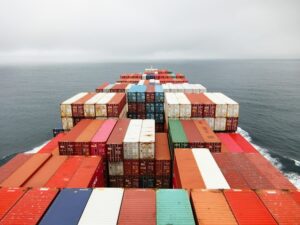September data from the International Energy Agency indicates further deceleration in global oil demand as China’s consumption drops, leading the agency to move forward its prediction of “peak oil.”
While Goldman Sachs argues global maximum oil consumption is still a decade away, another analyst says we are already post-peak.
The IEA’s report projects that demand will peak by 2029, with growth leveling off at around 105.6 million barrels per day before beginning to contract in 2030.
Some of the current slowdown in oil consumption may be caused by China’s cooling economy, due to a prolonged real estate slump. But it is also clear that the world’s second-largest economy is transitioning away from fossil fuels.
According to the IEA’s September Oil Market Report, China’s oil demand has contracted for four consecutive months, declining by 280,000 barrels per day in July alone. This marks a stark contrast from China’s 1 million barrels per day growth that characterized the previous year, IEA says.
For years, China has been a key driver of oil consumption, with its rapid industrialization and expanding middle class fueling robust demand for energy. But with that demand slacking, there would seem to be limited opportunities for expanding the market.
“Outside of China, oil demand growth is tepid at best. Latest data for the United States show a sharp decline in gasoline deliveries in June,” IEA says. “With the steam seemingly running out of Chinese oil demand growth, and only modest increases or declines in most other countries, current trends reinforce our expectation that global demand will plateau by the end of this decade.”
Along with an economic slowdown that is currently decreasing activity in China, there are more permanent changes. While overall car sales in China decreased in August, sales of Neighborhood Electric Vehicles (NEVs) increased 43.2% and now account for 53.5% of total car sales in the country, Reuters reports. Meanwhile, “development of a vast national high-speed rail network is restricting growth in domestic air travel,” according to IEA.
Others see peak later, or sooner
Despite IEA’s projection, the timeline for peak oil remains a subject of debate.
Goldman Sachs, for example, predicts that demand will continue to rise until 2034, particularly in sectors like petrochemicals, where oil-derived products remain in high demand. In this scenario, oil consumption could plateau rather than decline sharply, as demand for products like plastics offsets reductions in gasoline consumption.
“Even if gasoline peaks as forecast around 2028, petrochemical demand growth could more than offset the decline in gasoline demand through 2040. As the world’s GDP per capita rises, consumers will want more products such as plastics that are derived from oil, increasing the need for petrochemical production,” says Goldman Sachs’ recent analysis.
Another analyst says we may have already passed the peak.
Energy researcher Gail Tverberg notes that, despite ongoing global population growth, which would typically drive up demand for oil, prices have not followed the expected upward trend. Contrary to what many economists have predicted, Tverberg notes, oil prices have remained relatively stagnant.
Brent crude, priced around $75 per barrel on Sept. 25, has been remaining below the 24-month average for June 2022-May 2024.
The potential onset of a recession in the U.S. raises concerns that oil prices could dip even further in the near future, contrary to optimistic predictions, Tverberg argues.
OPEC holds off, but production rises
OPEC’s immediate forecast contrasts with IEA’s gloomier outlook. OPEC still predicts robust demand growth of 2.03 million barrels per day this year, according to Reuters, more than double the IEA’s estimate. OPEC expects demand to rise by another 1.74 million barrels per day in 2024, with sustained consumption in emerging markets, Reuters says.
In response to the current decline in prices, OPEC and its allies are delaying planned output increases in an attempt to stabilize the market. However, these measures have so far been insufficient to reverse the steep price losses seen in recent weeks.
While OPEC holds off on production, the IEA expects global oil production to rise, driven primarily by non-OPEC countries like the United States, Guyana, and Brazil. These nations are projected to lead supply growth through 2024 and 2025, adding 1.5 million barrels per day to global output, IEA says. In contrast, OPEC+ production is expected to decline slightly this year, largely due to voluntary cuts aimed at stabilizing prices in the face of weakening demand.
OPEC’s strategy of limiting production carries risks. Prolonged production cuts could result in OPEC+ losing market share to non-OPEC producers. Yet failing to address the growing surplus could push prices even lower.
OPEC is set to meet Oct. 2 to reassess its strategy, with many analysts warning that the cartel faces a delicate balancing act between maintaining price stability and preventing an oversupply situation.














